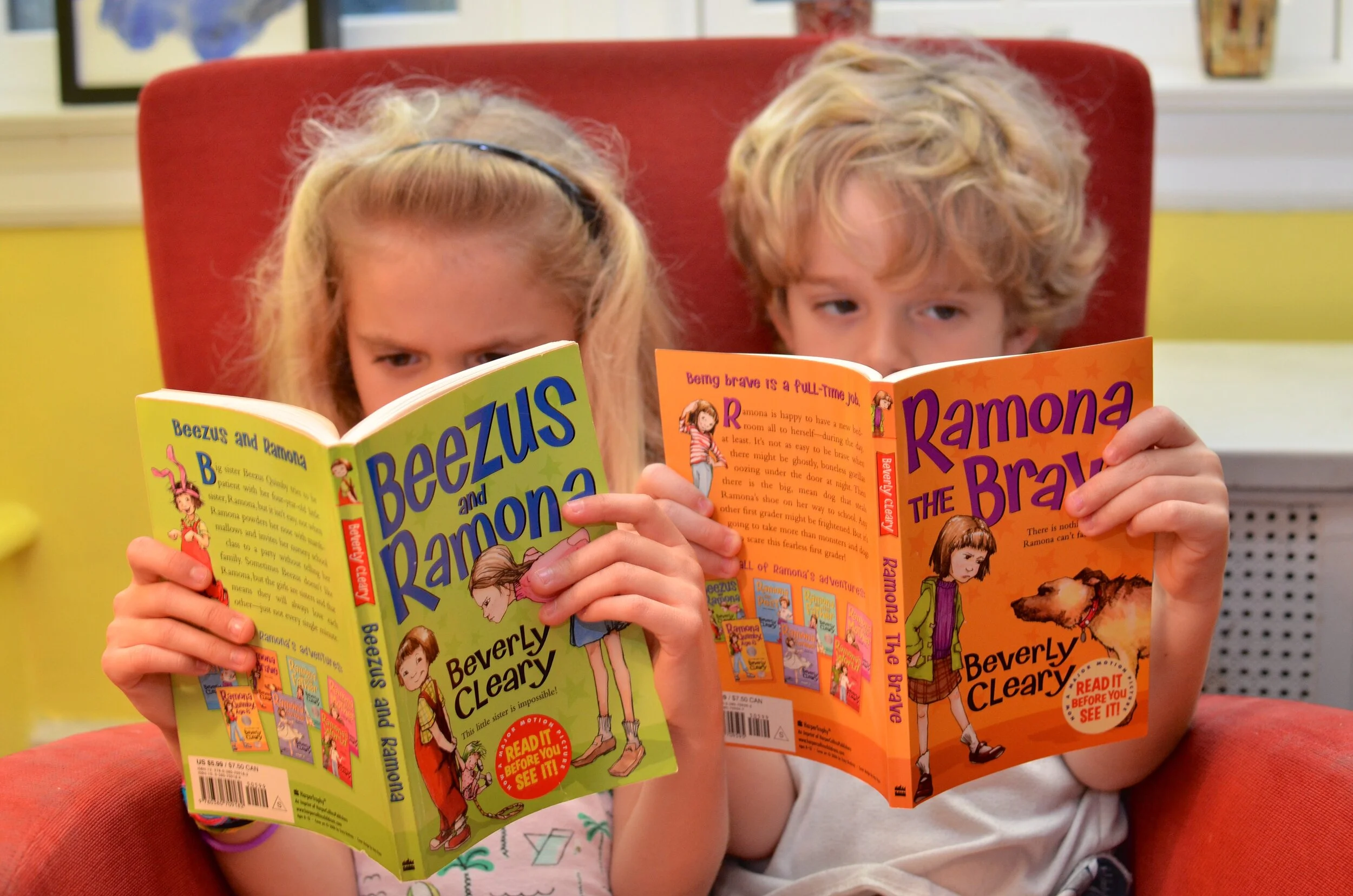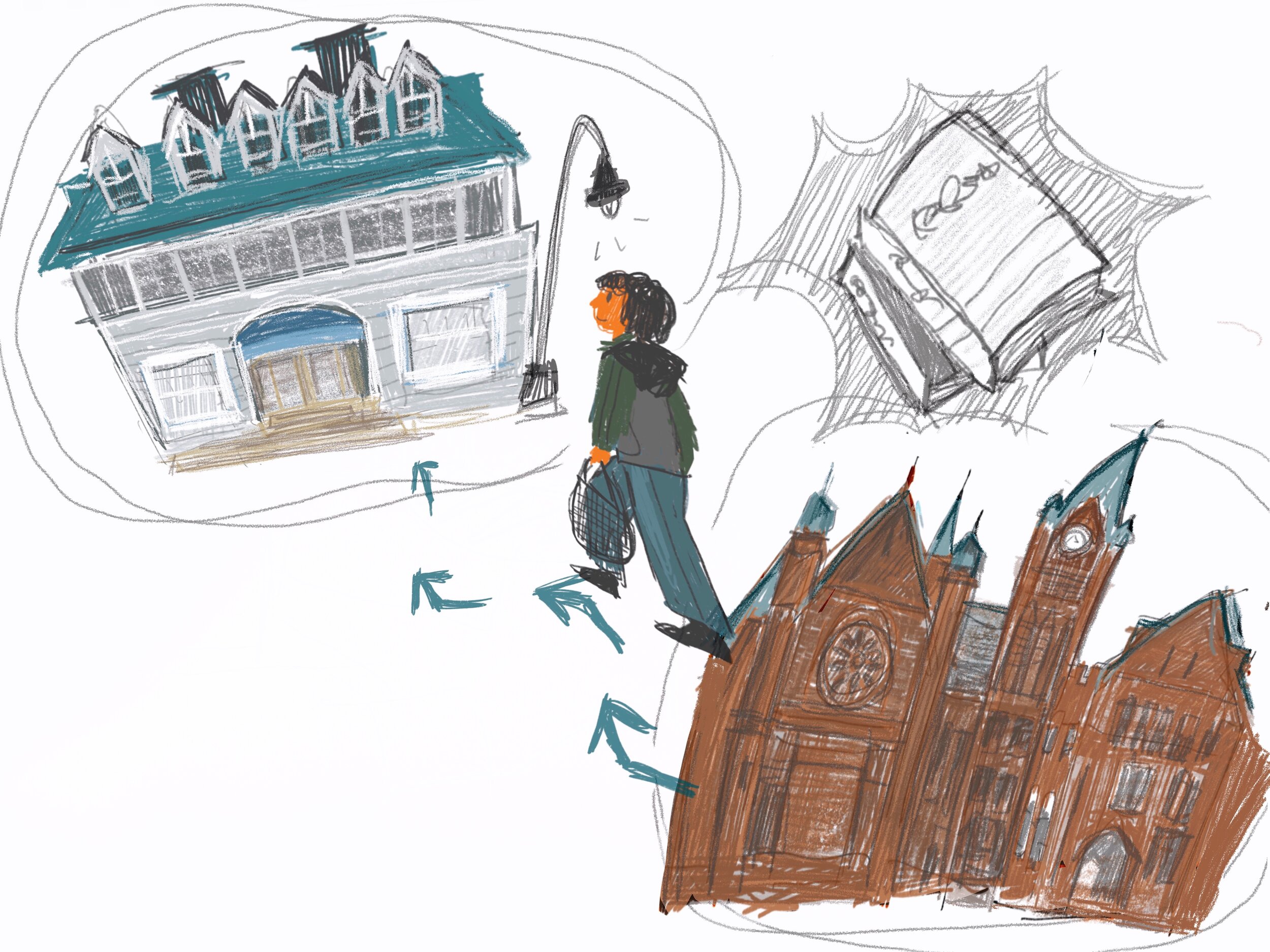“Call Us What We Carry” is the debut poetry collection of Amanda Gorman, who, according to NPR, became the youngest ever inaugural poet in 2021 at 22 years old. Her website notes that she graduated from Harvard with a degree in sociology in 2020, a year before she performed at Joe Biden’s inauguration. Gorman was appointed as the first National Youth Poet Laureate in 2017. Now, she is the youngest board member of 826 National, the largest youth writing network in the United States. Her first two books, a children’s book titled “Change Sings” and the published version of her inaugural poem “The Hill We Climb,” were released in September 2021. Readers can dive deeper into her work with “Call Us What We Carry,” originally “The Hill We Climb and Other Poems,” which was published on Dec. 7, 2021.
Predicting the future: science fiction draws inspiration from the world around us
‘Cloud Cuckoo Land’ stumbles on LGBTQ+ representation
Grace Perry reflects on her sexuality
Book award shortlists released, showcasing this year’s literary highlights
Fall book award season is upon us, highlighting titles from this past year that, according to critics and award panelists, are worthy of praise and recognition. Some notable book awards are the United States specific National Book Award, the Booker Prize for Fiction, the PEN/Faulkner Award and The Women’s Prize for Fiction. Every year, the panelists for each award pick books for a longlist based on nominations from publishers. They then narrow this down to a shortlist, from which they select a winner. Winners for the Women’s Prize for Fiction were announced on Sept. 8, and winners for the National Book Award and the Booker Prize will be announced in the coming weeks.
Emily Arsenault ’98 draws on Mount Holyoke ghost stories in her new book
Content warning: this article mentions suicide.
“This is what it means to be a ghost. To watch all the other girls live — laugh, talk, sleep, eat, dance, study, scream — while you flicker and fade into the shadows,” an unnamed narrator declares, opening “When All the Girls Are Sleeping,” published July 13, 2021, the latest novel by Mount Holyoke alumna Emily Arsenault ’98.
Female rage and empowerment dominate in Xiran Jay Zhao’s ‘Iron Widow’
“For eighteen years, my unibrow has saved me from being sold into a painful, terrifying death,” Xiran Jay Zhao writes in their debut novel, “Iron Widow.”
“Iron Widow” is not for the faint of heart.
A story about a thirst for vengeance and hunger for power, brimming with the pain caused by a deeply misogynistic society, the novel is for angry girls — the girls who have been beaten down and poked just enough to snap. For anyone who is aching to break out of the claustrophobic boxes that make up our world — “Iron Widow” is a novel of catharsis, or as the endorsement quote on the cover from E.K. Johnston states, “A primal scream of a book.”
Identity and place: dive into the work of three Latine authors
Celebrate Hispanic/Latine Heritage Month with these new and upcoming releases
'Everyone Knows Your Mother Is a Witch' is a must-read for historical fiction fans
Don’t let the title fool you — Rivka Galchen’s second novel “Everyone Knows Your Mother Is a Witch” is as far from contemporary popular fantasy as the Earth is from the sun. Based on an assemblage of historical documents from the seventeenth century, “Everyone Knows Your Mother Is a Witch” is a fictionalized account of the real-life story of astronomer Johannes Kepler’s mother, Katharina Guldenmann Kepler, an accused — and acquitted — witch.
The Tolkien Society focuses on diversity and inclusion during their annual summer seminar
The literary organization The Tolkien Society, founded around a half-century ago, is dedicated to promoting the life and works of the British scholar and author of the high fantasy novel “The Lord of the Rings,” J.R.R. Tolkien. Since 1986, the Society has held an annual short summer conference consisting of academic talks and panel discussions on a Tolkien-related theme. The 2021 Summer Seminar, titled “Tolkien and Diversity,” was held live via Zoom on July 3 and July 4. The conference, free to the public, hosted more than 500 attendees from 42 countries. The theme of diversity received backlash from right-wing political commentators who accused the society of going “woke.”
Susanna Clarke’s ‘Piranesi' blends fantasy, expansive language and a stereotypical portrayal of minority characters
At around 250 pages, British author Susanna Clarke’s second novel “Piranesi” seems miniscule in comparison to her 800-page debut novel “Jonathan Strange & Mr Norrell.” But with its imaginative world and compelling narrator, “Piranesi” packs a powerful epistemological punch. The book, however, is not without flaws — its portrayal of minority characters ultimately falls short, leaning on worn-out stereotypes of gay men and people of color.
Beloved children’s author Beverly Cleary dies at 104
On March 25, award-winning children’s author Beverly Cleary died in Carmel Valley, California, at the age of 104. She is perhaps best known for her series of books about sisters Ramona and Beatrice “Beezus” Quimby growing up in small-town America. The HarperCollins press release about Cleary’s death praised her for “setting a standard for realistic children’s fiction” through the publication of over 40 books, adding, “Cleary has also inspired authors, including Judy Blume, to deal with the real issues in young readers’ lives.”
Support small businesses during the pandemic by visiting these Pioneer Valley bookstores
As a first-year at Mount Holyoke, being able to handle the isolation of campus life during the pandemic can be difficult. My personal outlet has been finding places in and around campus to explore. One of the many places to find comfort during the pandemic for me has been bookstores. To be surrounded by physical books and people in real life seems like such a fantasy now, but it is slowly becoming reality again. Luckily for me and other Mount Holyoke book lovers, there seems to be a surplus of bookstores around the Pioneer Valley. Whether you’re on campus or just happen to be in Massachusetts, here are some local bookstores to explore.
The Mount Holyoke LITS liaisons are here for students, even remotely
Mount Holyoke holds 98th Glascock Poetry Contest on the virtual stage
Mount Holyoke held the 98th Kathryn Irene Glascock Intercollegiate Poetry Contest from March 25 to March 27. Normally held in Gamble Auditorium, this year’s competition was held virtually on Zoom due to the ongoing COVID-19 pandemic. The first day of the event was dedicated to a conversation with the judges. The event was intentionally set to “meeting” instead of “webinar” style, allowing the poets to better connect with the audience as they answered questions.
Kylie Gellatly FP ’22 heats up the Arctic with new collection ‘The Fever Poems’
Kylie Gellatly FP ’22 isn’t one for a backstory or explanation. “I’ve never even attempted to do this,” she said in regard to summarizing over a decade of time that led her to Mount Holyoke and the publication of her first book. For Gellatly, this is best summarized through her art and creative process. When speaking at the FP Monologues on March 23, instead of talking about her journey to Mount Holyoke or a key event in her life that led her to who she is today, Gellatly shared a handful of poems, all to be published July 16 in her book “The Fever Poems.”
4 Post-Valentine’s Day Memoirs for Your Local Heartbroken Queer Kid
Memoirs are an easy way to feel seen and understood in literature. They won’t provide the same escapism as a fantasy book, but they will ground you in reality. As the Valentine’s Day section of CVS is on its last legs, try filling the chocolate-and-romance void by reading a memoir with eerily relatable themes of melancholic queer desire.
African American Writers’ Voices and Experiences Have Always Been Part of American Literature
By Ella Jacob ’24
Staff Writer & Copy Editor
Content warning: This article discusses racism, slavery, sexual harassment and violence against African American individuals.
“There is no American literature without African American literature,” declared Elizabeth Young, professor and chair of English at Mount Holyoke College. However, according to the Harvard Ed. Magazine, “[i]t’s been more than 50 years since literacy experts first stressed the need for more diverse books in the classroom..” By expanding our literary scope beyond the white authors who commonly appear in the American literary canon, we can see the substantial impact Black authors have on American literature.
Lucy Terry wrote the first recorded piece of African American poetry in 1746. Terry was enslaved in Massachusetts when she wrote her only surviving work, the poem “Bars Fight.” Set in colonial America, the poem acknowledges white colonists killed in an encounter with Native Americans in 1746. It was passed down orally for more than 100 years until it was published in 1855.
Three years before the American Revolution, Phillis Wheatley became the first African American to publish a volume of poetry, “Poems on Various Subjects, Religious and Moral,” written in 1773. Wheatley began learning to read and write at a young age, and it is believed she wrote her first poem at age 13. Her book received international acclaim, and her poetry earned praise from historically significant American figures like Benjamin Franklin and George Washington. Many people were reluctant to read her works, but she still emerged as a household name in American poetry.
Most African American poetry in the 19th century took the form of oral accounts from fugitive slaves. Among the authors who gained prestige during this era, Frederick Douglass is one of the most famous, known for publishing “Narrative of the Life of Frederick Douglass, an American Slave,” which fueled the abolitionist movement in the U.S. Douglass was also the first African American to be nominated for U.S. vice president. He was a revered orator, leader and advocate for equal rights.
Harriet Jacobs was another renowned African American writer of the 19th century. In 1861, she self-published “Incidents in the Life of a Slave Girl,” a narrative of her enslavement. The book discusses the sexual abuse enslaved women faced from slaveholders alongside Jacob’s struggle to gain freedom for herself and her children. Jacobs published her book, now an American classic, under the pseudonym Linda Brent. “Incidents in the Life of a Slave Girl” has become one of the most prominent slave narratives written by a woman and has brought attention to the particular abuse that enslaved women faced.
After the Civil War, there was a boom in printing African American literature. One of the leading writers of this period, Booker T. Washington, wrote several books, including “The Story of My Life and Work” and “The Man Farthest Down.”
Washington had an infamous feud with another well-known African American writer of the time, W.E.B. Du Bois. Du Bois had a more radical approach to combating racism, whereas Washington had an “assimilationist view; not as confrontational toward racial politics,” according to Young. “For Black political and cultural thought in the 20th and 21st centuries, Du Bois remains the more salient figure, the more intellectual, the more prolific, the more radical in his analysis,” she explained.
Although these writers are often identified by their opposing perspectives, “they were writing in the context of lots of different African American writers and intellectuals, … [including] Pauline Hopkins and Anne Francis Harper, two important African American women writers and thinkers,” Young emphasized. “I think it’s important, as we review the conflict between them, to see them as part of a kind of complex world of many people, including lots of women who are thinking and writing about race and Black life at the time.”
A significant and influential period in African American culture and art, the Harlem Renaissance saw the rise of some of the most prominent authors of the early 20th century. Alongside musicians like Louis Armstrong and artists like Aaron Douglas were writers such as Zora Neale Hurston, Alice Dunbar-Nelson and Langston Hughes, all of whom shaped African American literature.
Hurston is best known for writing “Their Eyes Were Watching God,” a book that follows Janie Crawford as she navigates adolescence and adulthood as a Black woman. The book was met with heavy resistance at its time of publication and fell into obscurity for a few decades, but was rediscovered in 1975 by another African American writer, Alice Walker. Hurston’s novel is now considered an essential piece of African American and women’s literature. Hurston, along with Dunbar-Nelson, were some of the most high-profile female writers of the era. Dunbar-Nelson was one of the only African American diarists of the early 1900s.
Hughes, considered one of the best writers in American history, shaped the Harlem Renaissance, focusing on portrayals of African American life from the 1920s to the 1960s. He brought increased attention to African American literature in American society, which led the mainstream media to begin absorbing and appreciating African American art.
Amid protests and demonstrations to abolish segregation following the civil rights movement, African American writers focused on the unfair treatment toward Black people while also highlighting the importance of the Black individual and the Black experience.
One of the most notable authors of that period was James Baldwin, who taught at Mount Holyoke as part of the Five College faculty. He wrote “Go Tell It on the Mountain,” which analyzed the intersection of race and sexuality, specifically what it meant to be both Black and gay in 1930s Harlem, a topic that was taboo for the general American public at the time.
Suzan-Lori Parks ’85 studied under Baldwin at Mount Holyoke. She says that he called her an “utterly astounding and beautiful creature who may become one of the most valuable artists of our time.” Parks went on to win the Pulitzer Prize for Drama in 2002 for her play “Topdog/Underdog.” She was the first African American woman to win the award.
Another author of the civil rights era was Ralph Ellison, who wrote “Invisible Man,” a National Book Award winner focusing on the unattainability of the American Dream for African Americans, as their accomplishments and individuality are largely perceived as “invisible.”
This period also marked an increase in the recognition of Black women poets, including Gwendolyn Brooks. She was the first Black author to win the Pulitzer Prize and the first Black woman to be a poetry consultant to the Library of Congress.
Alongside these books, many historic essays that focused on human rights and injustice were published by Black Americans during this time. The most well-known were Martin Luther King Jr.’s “Letter from Birmingham Jail” and Malcolm X’s “The Ballot or the Bullet.”
From the late 1900s to the present day, African American literature has become increasingly popular, frequently earning awards and topping bestseller charts. Female authors made waves in the American poetry scene, from Alice Walker, who won the 1983 Pulitzer Prize for Fiction and the National Book Award for her novel “The Color Purple,” to Maya Angelou, who delivered her poem “On the Pulse of Morning” at former President Bill Clinton’s first inauguration. Today, writers like Amanda Gorman, the youngest poet to speak at a presidential inauguration, continue to highlight the importance of African American composition.
Following the turn of the 21st century, the variety of African American writing circulating worldwide changed drastically from the limited availability of colonial African American works. As more Black writers establish themselves as forces in the American literary scene, their influence and work must be acknowledged in the American literary canon.
“I do not think one could talk at all responsibly or accurately or imaginatively about something called American literature that does not have African American literature at the center,” Young said.
















